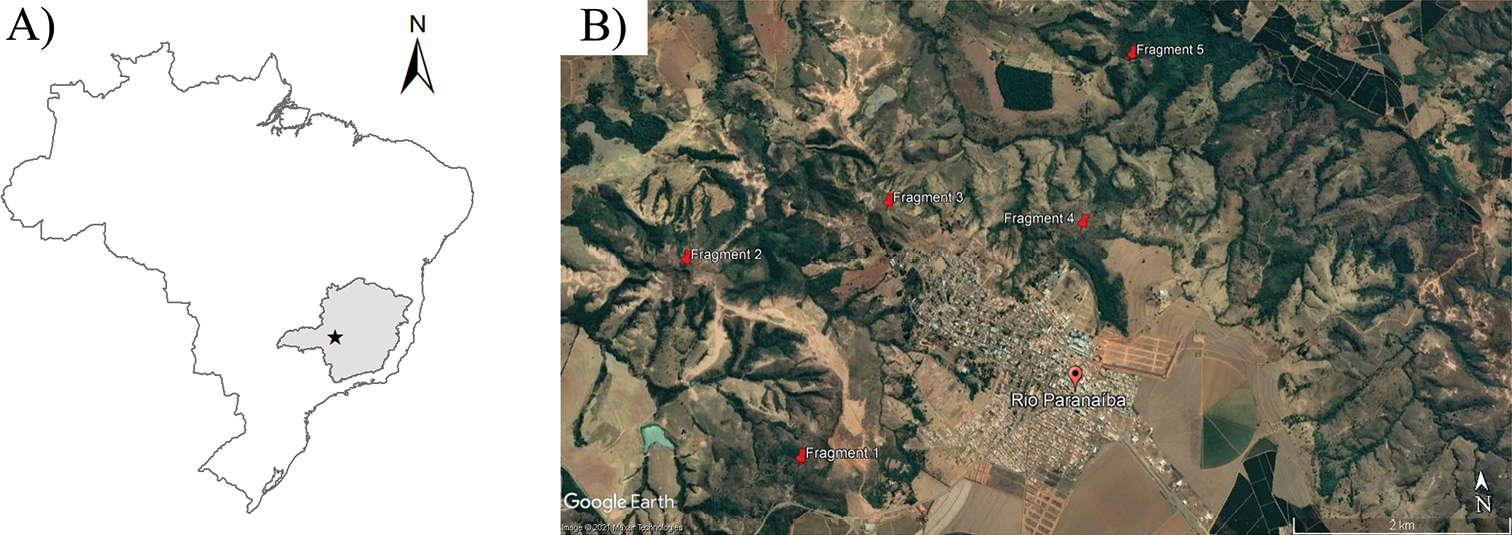
|
||
|
Geographic location (A) and an aerial image of the municipality of the Rio Paranaíba (B), Minas Gerais, south-eastern Brazil, showing the five fragments of Cerrado Rupestre studied (image: Google Earth 2021). The fragments evaluated are found on slopes and hilltops, being “Permanent Preservation Areas” (PPAs), and are composed of ferruginous soil that forms a continuous crust known as “canga couraçada”. |